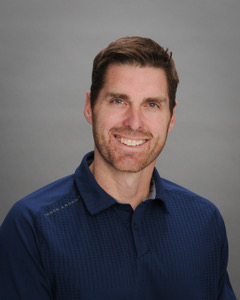
Burnout is a growing situation that is slowly undermining the productivity of doctors and their staff. And in recent years, the situation has worsened as patient demands, documentation and regulatory requirements have increased.
In addition to the situation, the challenges associated with added technology, the need to virtualize and respond to where the patient is, the need to keep up with ever-changing information and situations in terms of what patients need from us. there is.
Kirk Davis, executive director of operations at Dignity Health, calls it time poverty. With more demands on doctors, more time in the office, less time at home with his family, the scale of his work-life balance is tipping toward burnout.
It is because there is a meaning and a purpose that a person who became a doctor goes on the path of medicine. However, many feel that with the patient relationship de-emphasized, altruistic reasons have been washed out of the highly robotic and documentation-centric field of medicine. With the RVU challenge of determining reimbursement for services rendered, it is easy to see that much of the work performed by physicians can seem irrelevant to patient care.
Distracted doctor
I liken the application of technology in medicine to a distracted driver and his mobile phone. Cell phones are useful, but when you’re behind the wheel, focus on driving and don’t text or do anything stupid that threatens your safety.
And in many ways, I think our doctors and staff are distracted clinicians. I have. And while the addition of video consultations during the pandemic forced doctors to fiddle with another layer of technology to interact with their patients, it brought them even closer in some ways.
Add to this an EHR (electronic health record) and documentation requirements. No wonder our documentation is distracting. More clinicians are retiring early, changing jobs, reporting burnout and depression, and even committing suicide.
Can technology ease the burden?
The potential of technology in medicine certainly makes sense. We see it in other industries as well. Things in our lives that have become a little more accessible can be made more efficient, such as booking travel, finding restaurants, where to eat, and buying movie tickets. and easy to do.
Yet, in healthcare, technology promises still feel unfulfilled. Companies were already conducting video conference calls, but pre-COVID virtual visits were little more than a small pilot. The pandemic has forced clinicians to rapidly accept virtual visits. Also, while virtual visits are not a solution for all patients, they are a solution for many as they take advantage of available technology to make patient-provider communication channels easier. .
Do Algorithms Replace Experience?
On the one hand, technology makes patients safer. Data-driven programs offer predictive modeling, and some doctors use drop-down menus to make decisions. But when will years of training and experience outperform algorithms? When data replaces experience, doctors lose the sense that their training and experience are related, so they lose meaning from their work. At what point do doctors rely on training and experience rather than data? We’re still trying to figure it out.
But at the end of the day, we’re treating unpredictable humans who may be facing stressors that computers can’t explain.
Humans have a unique ability to take a lot of complex data, put it together, and find all the nuances in it. And I think computers, technology and automation can solve some of the heavy lifting. And when you combine that with our unique humanity, we can come to a patient-centered diagnosis of the person sitting across from us, rather than a generalized answer.
electronic chart
No other technology is as advanced as the EHR to meet documentation and regulatory requirements. From dictaphones and transcriptionists, to speech to text, transcription of speech to his EHR, to the use of scribes, we see more technology being used to work with the EHR.
Technology has enabled clinicians to stay up to date on charting instead of working late and having unfinished paper charts piled up on their desks.
Patients are also embracing this technology. Because access has improved, treatment has sped up, and perhaps most importantly, things have become more convenient for patients. No risk of misplacing charts as all records are just a click away. In addition, on-call doctors can access charts from the comfort of their own home.
Technology supports work-life balance.
Technology makes it easier for patients to see clinicians and makes them feel more comfortable. Technology can help fill staffing shortages. Technology can also help doctors get the most out of their licenses and enable them to work with their patients the way we want. Incorporating the right technology into your daily routine is a blessing.
In my opinion, technology is the North Star and we have to embrace it.
About David Lundquist, MD
In December 2019, Dr. Davin Lundquist joined Augmedix as Chief Medical Officer. In this role, Dr. Lundquist drives rapid innovation across Augmedix’s product development team while maintaining clinical excellence and close alignment with the ever-changing US healthcare environment. Dr. Lundquist’s portfolio includes the introduction of next-generation natural language processing automation modules into his Augmedix workflow, evolving Augmedix’s real-time support system to help physicians fill gaps in their care, and other critical quality initiatives. It includes encouraging them to work. Dr. Lundquist also supports the company’s commercial efforts to expand its footprint among major US healthcare systems.
